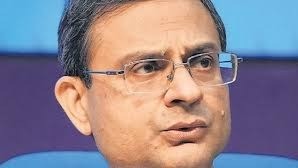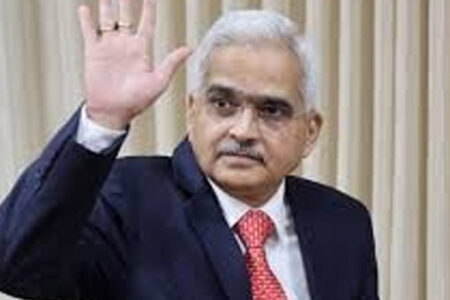If you were walking on Mumbai’s Mint Road on Friday, where India’s central bank is headquartered, you would have seen fireworks. Yes, the Reserve Bank of India (RBI) has brought Diwali four and a half months early for consumers this year.
The RBI reduced the policy repo rate for a third successive time, which was widely expected. But what was not expected was the depth of the rate cut — 50 basis points (bps). The three rate cuts since February have brought the policy repo rate down from 6.5 per cent to 5.5 per cent in just four months. One basis point is a hundredth of a percentage point.
The RBI did not stop there. The action-packed June policy also pared the cash reserve ratio (CRR) — the portion of net demand and time liabilities (a loose proxy for deposits) which commercial banks keep with the RBI (on which they do not earn any interest) — by 100 bps to 3 per cent.
Staggered over four instalments between September 6 and November 26, the CRR cut will release Rs2.5 trillion into the system. Since January, the RBI has infused Rs9.5 trillion liquidity, besides transferring a record Rs2.69 trillion as dividend to the government. What more could the banking system have asked for?
The combination of a deep rate cut and a reduction in CRR does not happen often. It has been seen only twice this century — in the wake of the collapse of global investment bank Lehman Brothers Holdings Inc in 2008, and when the Covid-19 pandemic hit India in 2020. On both occasions, neither was the context normal, nor the quantum of the cut exactly identical.
If this combination is rare, two other RBI actions are probably unprecedented. First, the timing of the CRR move: Even the first phase of the cut will take effect a month after the next monetary policy announcement. And second, this is the quickest reversal of the monetary policy stance from “accommodative” to “neutral”. The Monetary Policy Committee (MPC), the RBI’s rate setting body, had changed its stance from “neutral” to “accommodative” in April.
What’s more, this policy has yet another rare feature — not in action taken but in communication. The CRR cut does not figure as a policy action in the governor’s statement. It comes much later, as part of “liquidity and financial market conditions”. That is probably because CRR is a liquidity tool and the MPC has no say in its level.
Why has the stance changed in two months? Well, the RBI has frontloaded policy actions to give a big push to growth, as the war against inflation, according to RBI Governor Sanjiv Malhotra, is decidedly won.
“It is imperative to continue to stimulate domestic private consumption and investment through policy levers to step up the growth momentum. This changed growth-inflation dynamic calls for not only continuing with the policy easing but also frontloading the rate cuts to support growth,” his statement says.
He also says: “After having reduced the policy repo rate by 100 bps in quick succession since February 2025, under the current circumstances, monetary policy is left with very limited space to support growth.”
This implies we may have seen the end of the rate-cut cycle. Till yesterday, everybody was talking about 5.25 per cent and even 5 per cent as terminal rate, expecting more rate cuts in coming months. By changing the stance, the RBI has killed that expectation. This is why the yield on 10-year bond rose on Friday. This is also rare – bond yield rising by around 15 basis points from the days low in a highly volatile market — despite an ultra-loose monetary policy of a deep rate cut and reduction in CRR.
The rupee appreciated marginally and equity markets gave a thumbs-up to the policy. Most bank stocks moved northwards.
Indeed, banks’ net interest margin — the difference between what they earn from loan assets and what they spend to gather deposits — will shrink following the repo rate cut. But, the RBI has made sure that over a period of time, banks will be able to cover that up to some extent, as the CRR cut will free up money which they can invest or lend to earn. An incentive to lend. Of course, the liquidity could also be used to sterilise billion of forex swaps that are expected to mature in the second half of the calender year.
About 45 per cent of the loan book of the banking system is linked to an external benchmark, mostly the repo rate. This means they will have to lower rates for such loans by 50 basis points immediately. Over the next few months, as the CRR cut releases liquidity, they will earn interest by deploying that. Besides, we can expect banks to cut rates of both fixed deposits and savings bank deposits to bring down the cost of funds. And, of course, the pressure on the banking system is lend is palpable.
The rest of the policy is on expected lines. The RBI has projected the consumer price index-based inflation rate for 2025-26 at 3.7 per cent, lower than its April projection of 4 per cent. And, there is no change in its gross domestic product growth projection for the year. It remains at 6.5 per cent. The governor’s statement says the monetary policy actions should be seen as a step towards propelling growth to a higher “aspirational” trajectory. That’s an interesting adjective too — probably not used by the RBI earlier in the context of growth.
The writer, Consulting Editor with Business Standard, is an author and Senior Adviser to Jana Small Finance Bank Ltd. His latest book: Roller Coaster: An Affair with Banking. To read his previous columns, log on to www.bankerstrust.in. X: @TamalBandyo



